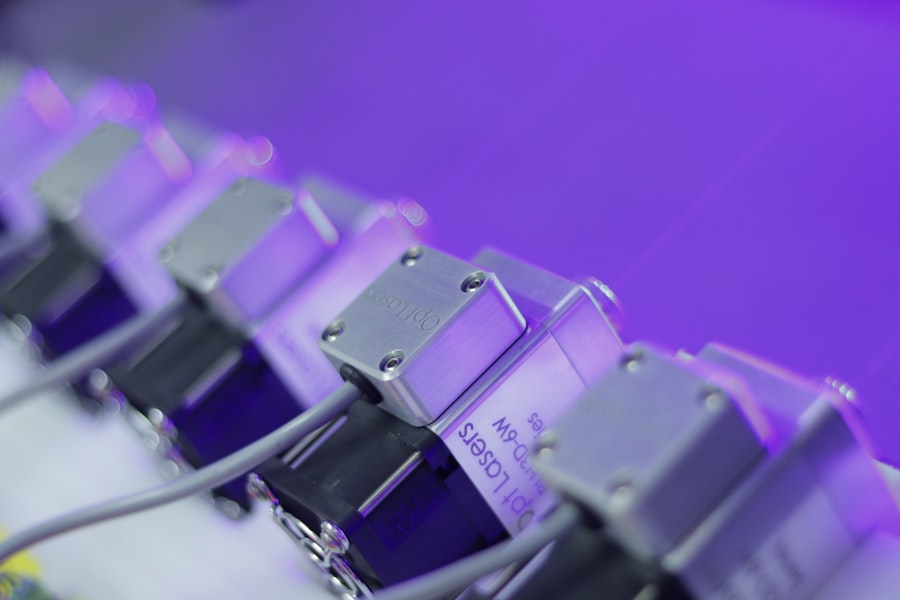Brazilian laser hair removal is a popular choice for those seeking a long-term solution to unwanted hair in the bikini area. This method utilizes concentrated beams of light to target hair follicles, effectively reducing hair growth over time. As you consider this option, it’s essential to understand how the procedure works and what to expect during the process.
The laser emits energy that is absorbed by the pigment in the hair, which then damages the follicle and inhibits future growth. This technique is not only efficient but also minimizes discomfort compared to traditional hair removal methods. When you opt for Brazilian laser hair removal, you are choosing a treatment that can lead to smoother skin and less maintenance in the long run.
The procedure is typically performed in a series of sessions, allowing for gradual hair reduction. Many individuals find that after completing their treatments, they experience significantly less hair regrowth, and the hair that does return is often finer and lighter in color. Understanding these aspects can help you make an informed decision about whether this treatment aligns with your personal grooming goals.
Key Takeaways
- Brazilian laser hair removal targets hair in the bikini area
- Number of treatments needed depends on factors like hair color and thickness
- Skin and hair type play a crucial role in determining the effectiveness of the treatment
- Hormonal imbalances can affect the success of Brazilian laser hair removal
- Previous hair removal methods can impact the number of treatments needed
- Consultation with a professional can help determine the number of treatments needed
- Realistic goals and expectations should be set for Brazilian laser hair removal
- Tips for maximizing effectiveness include avoiding sun exposure and following aftercare instructions
Factors Affecting the Number of Treatments Needed
The number of treatments required for effective Brazilian laser hair removal can vary significantly from person to person. One of the primary factors influencing this is your hair growth cycle. Hair grows in three distinct phases: anagen (growth), catagen (transitional), and telogen (resting).
Laser hair removal is most effective during the anagen phase when the hair is actively growing. Since not all hairs are in the same phase at any given time, multiple sessions are necessary to target each hair effectively. Additionally, your individual hair characteristics play a crucial role in determining how many treatments you will need.
Factors such as hair thickness, density, and color can all influence the effectiveness of the laser. Darker, coarser hair tends to respond better to laser treatment because the contrast between the hair and skin allows for better absorption of the laser energy. Conversely, finer or lighter-colored hair may require more sessions to achieve similar results.
Understanding these factors can help you set realistic expectations for your treatment journey.
The Importance of Skin and Hair Type
Your skin type and tone are critical considerations when it comes to Brazilian laser hair removal. The effectiveness of the treatment largely depends on the contrast between your skin and hair color. For instance, individuals with light skin and dark hair typically see the best results because the laser can easily differentiate between the two.
However, if you have darker skin tones, it’s essential to choose a clinic that uses advanced laser technology designed for various skin types to minimize the risk of skin damage. Moreover, your skin’s sensitivity can also affect your experience during treatment. Some individuals may experience redness or irritation post-treatment, which is usually temporary but can be more pronounced in those with sensitive skin.
It’s advisable to consult with a qualified practitioner who can assess your skin type and recommend the most suitable laser technology for your needs. This personalized approach ensures that you receive optimal care tailored to your unique characteristics.
The Role of Hormonal Imbalances
| Hormone | Effect |
|---|---|
| Estrogen | Regulates menstrual cycle and reproductive system |
| Progesterone | Supports pregnancy and regulates menstrual cycle |
| Testosterone | Regulates sex drive and muscle mass |
| Thyroid hormones | Regulate metabolism and energy levels |
Hormonal imbalances can significantly impact hair growth patterns and may influence the number of Brazilian laser hair removal treatments you require. Conditions such as polycystic ovary syndrome (PCOS) or hormonal fluctuations related to pregnancy or menopause can lead to increased hair growth in certain areas. If you suspect that hormonal issues are affecting your hair growth, it’s essential to address these concerns with a healthcare professional before starting laser treatments.
For instance, if you have a hormonal condition that causes excessive hair growth, you may find that even after completing your laser sessions, some regrowth occurs due to ongoing hormonal influences. In such cases, ongoing maintenance treatments may be necessary to keep unwanted hair at bay.
By being aware of these factors, you can better prepare for your journey toward smoother skin.
The Impact of Previous Hair Removal Methods
Your history with other hair removal methods can also play a role in determining how many Brazilian laser hair removal sessions you will need. If you have previously used methods such as waxing or shaving, your hair follicles may have been altered in a way that affects their response to laser treatment. For example, frequent waxing can lead to finer hair regrowth, which may require more sessions for effective treatment.
Additionally, if you have undergone other forms of laser hair removal in the past, it’s essential to inform your practitioner about your previous experiences. Different lasers have varying levels of effectiveness based on individual responses, and knowing what has or hasn’t worked for you in the past can help tailor your current treatment plan. By considering your previous methods of hair removal, you can work with your practitioner to develop a strategy that maximizes the effectiveness of your Brazilian laser treatments.
How to Determine the Number of Treatments Needed

Factors Affecting Treatment Plan
During your initial consultation, your practitioner will evaluate various factors such as your skin type, hair color, and growth patterns to provide a personalized treatment plan. They may also take into account any hormonal influences or previous hair removal methods that could affect your results.
Typical Treatment Sessions
Typically, most individuals require between six to eight sessions spaced several weeks apart for optimal results. However, this number can vary based on individual responses and specific characteristics.
Monitoring Progress and Open Communication
Your practitioner will monitor your progress throughout the treatment process and may adjust your plan as needed based on how well you respond to the laser.
Managing Expectations and Setting Realistic Goals
As you embark on your Brazilian laser hair removal journey, managing expectations is crucial for a positive experience. While many individuals achieve significant hair reduction after completing their sessions, it’s important to understand that results can vary widely based on individual factors such as skin type, hair characteristics, and hormonal influences. Setting realistic goals will help you stay motivated throughout the process and avoid disappointment.
It’s also essential to recognize that while laser hair removal can lead to long-lasting results, it may not result in complete permanent hair removal for everyone. Some individuals may experience occasional regrowth that requires maintenance treatments over time. By understanding these nuances and discussing them with your practitioner, you can create a more informed perspective on what to expect from your treatments.
Tips for Maximizing the Effectiveness of Brazilian Laser Treatments
To maximize the effectiveness of your Brazilian laser hair removal treatments, there are several tips you can follow. First and foremost, adhere strictly to the treatment schedule recommended by your practitioner. Consistency is key when it comes to achieving optimal results; missing appointments or delaying sessions can hinder progress.
Additionally, avoid sun exposure before and after treatments, as tanned skin can increase the risk of complications and reduce treatment efficacy. If you must be outdoors, use sunscreen with a high SPF to protect your skin. Furthermore, refrain from waxing or plucking hairs between sessions; these methods can disrupt the growth cycle and make it more challenging for the laser to target follicles effectively.
Lastly, maintain open communication with your practitioner throughout the process. Share any concerns or changes in your skin or hair growth patterns so they can adjust your treatment plan accordingly. By following these tips and staying engaged in your treatment journey, you’ll be well on your way to enjoying smooth skin with minimal maintenance in the future.
If you are considering laser hair removal treatments for a Brazilian, you may want to check out the article on www.inlaserhairremoval.com for more information. This article discusses the number of sessions typically required for effective hair removal in the Brazilian area. It provides valuable insights into the process and what to expect during each treatment session. It is a helpful resource for anyone considering laser hair removal for this specific area.
FAQs
What is Brazilian laser hair removal?
Brazilian laser hair removal is a cosmetic procedure that uses concentrated beams of light to remove unwanted hair from the bikini area. It is a popular choice for individuals who want a long-term solution for hair removal in this sensitive area.
How many laser hair removal treatments are typically needed for Brazilian hair removal?
On average, most individuals require 6-8 laser hair removal treatments for effective and long-lasting results in the Brazilian area. However, the exact number of treatments can vary depending on factors such as hair color, hair thickness, skin tone, and individual response to the treatment.
How far apart are the laser hair removal treatments for Brazilian hair removal?
Laser hair removal treatments for the Brazilian area are typically spaced 4-6 weeks apart. This allows the hair to be in the optimal growth phase for effective treatment.
Is Brazilian laser hair removal permanent?
While Brazilian laser hair removal can significantly reduce hair growth in the treated area, it is important to note that it is not always permanent. Some individuals may experience regrowth over time, but the hair that does grow back is often finer and lighter in color.
Are there any risks or side effects associated with Brazilian laser hair removal?
Like any cosmetic procedure, Brazilian laser hair removal carries some risks and potential side effects. These can include temporary redness, swelling, and discomfort in the treated area. In rare cases, there may be changes in skin pigmentation or scarring. It is important to consult with a qualified and experienced practitioner to minimize these risks.





